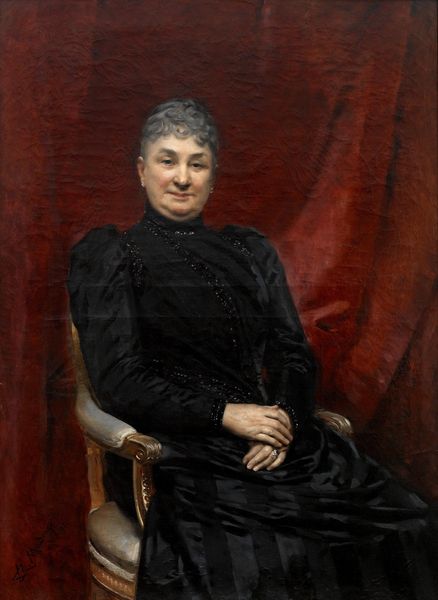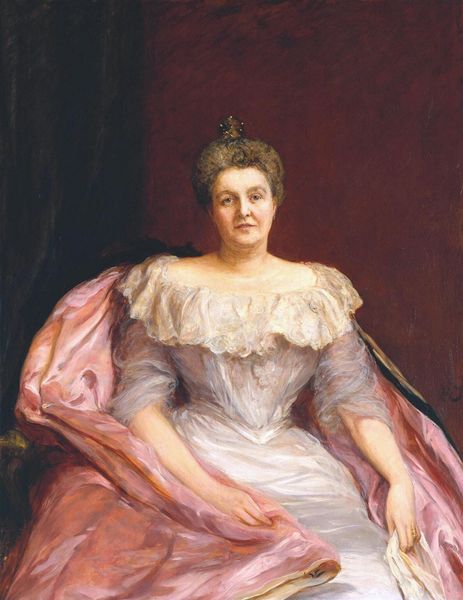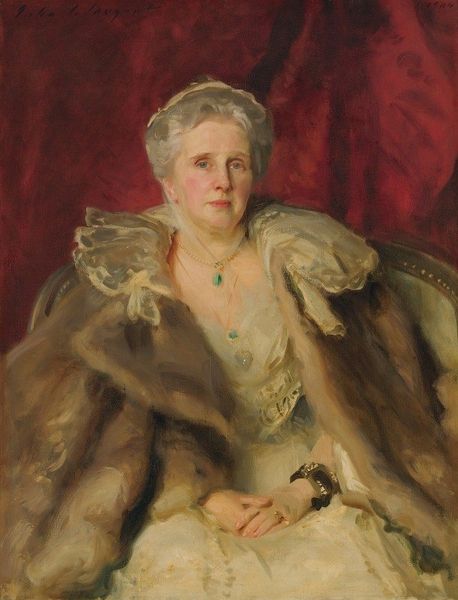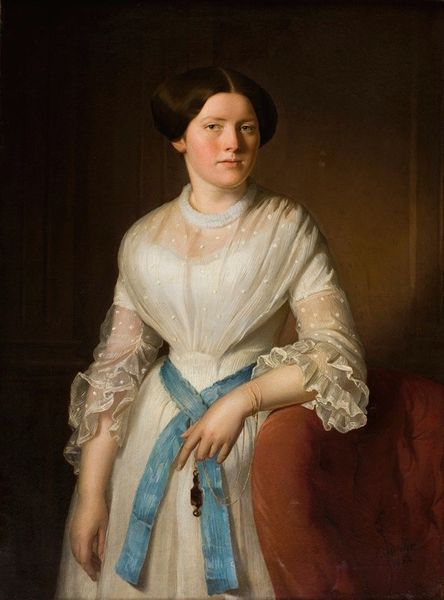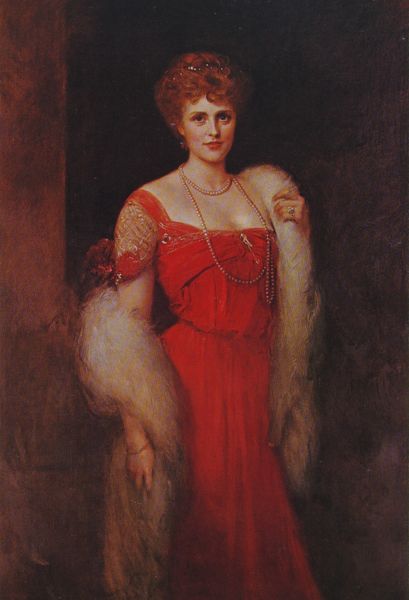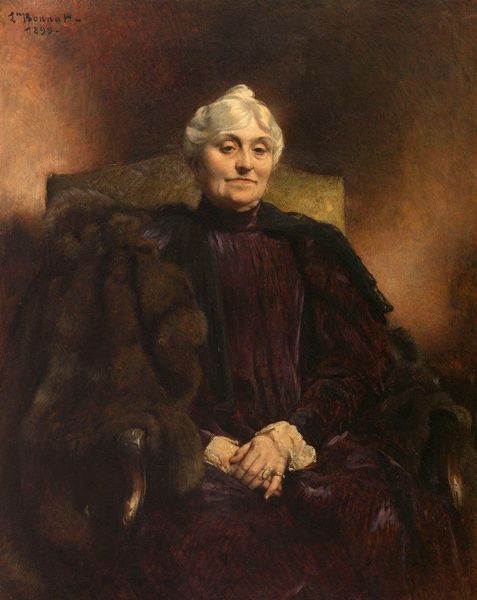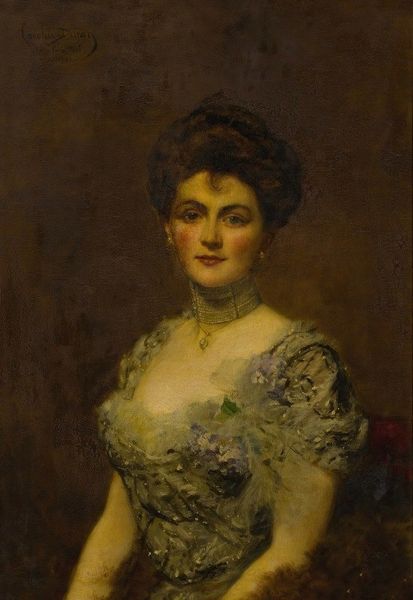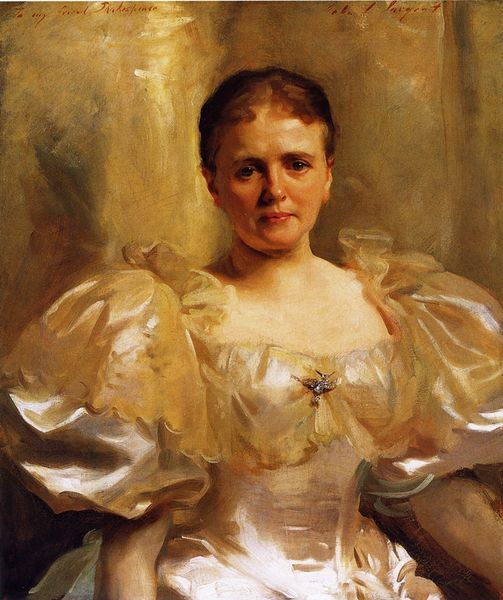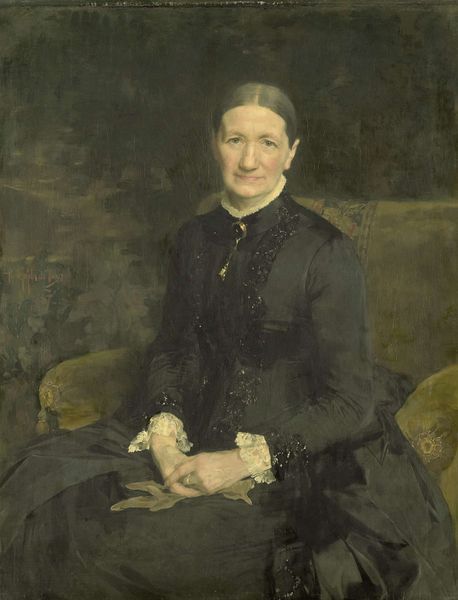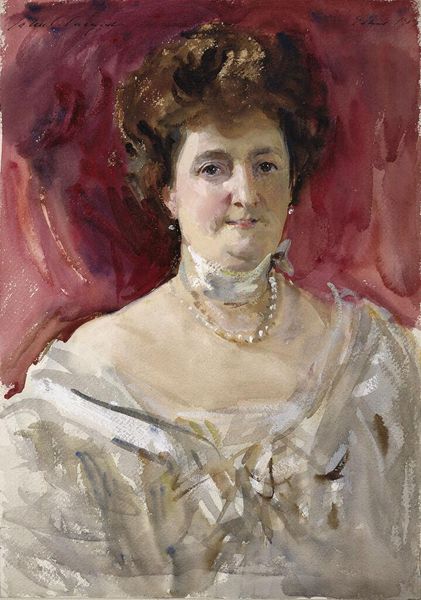
Dimensions: 50 x 40 in. (127 x 101.6 cm) (canvas)50 x 41 3/4 x 3 1/4 in. (127 x 106.05 x 8.26 cm) (outer frame)
Copyright: No Copyright - United States
Curator: Before us hangs Robert Koehler's "Portrait of Alvina Roosen," painted in 1906 and now part of the Minneapolis Institute of Art's collection. Editor: It's strikingly somber, isn’t it? The dark palette and her almost stern expression give it a weighty feel, though the roses add a touch of life. It seems posed but is realistic. Curator: Indeed. Koehler was an important figure in the American art scene, particularly in the late 19th and early 20th centuries. This portrait reflects a certain Gilded Age formality, an interest in portraying the sitter with dignity and perhaps even aspirational qualities. Notice her lace and the pearl details, they mark a moment of changing traditions and display of societal norms through fashion. Editor: What strikes me is the texture. You can almost feel the velvet of her gown, the softness of that feathered fan she's holding. The materiality really emphasizes the sitter's wealth and status, it is almost a study of surfaces and their social implications. The very process of creating such a detailed oil painting was labor-intensive, signaling luxury. Curator: And those roses aren't just decorative; they are almost certainly symbolic. Roses have been used for centuries in portraiture to convey love, beauty, and even a certain transience. I wonder if the roses here add layers of symbolism? Editor: It's subtle, I'll grant. But I think you are right that those kinds of details can reflect on the person portrayed—Alvina Roosen’s status would permit having those things in the painting. But let's not forget this object’s use; her garments weren't spontaneously available and required the textile industry to support their production. Curator: Certainly a commissioned piece. Beyond its aesthetic qualities, I'm most interested in understanding the social context in which this work would have been viewed. What role did portraits like these play in solidifying social standing and broadcasting respectability at the turn of the century? Editor: For me, I think looking at the layers that made the art—the canvas itself and paint as goods, the clothing as items from factories, the labor to create this, it all provides a fascinating counterpoint. The art is more than surface-level meaning! Curator: A perfect marriage of our approaches. By considering both the social role and material construction, we’re equipped to have a new and complete viewing of art. Editor: Right, seeing "Portrait of Alvina Roosen" with all of these components in mind gives me new respect for art analysis.
Comments
No comments
Be the first to comment and join the conversation on the ultimate creative platform.
